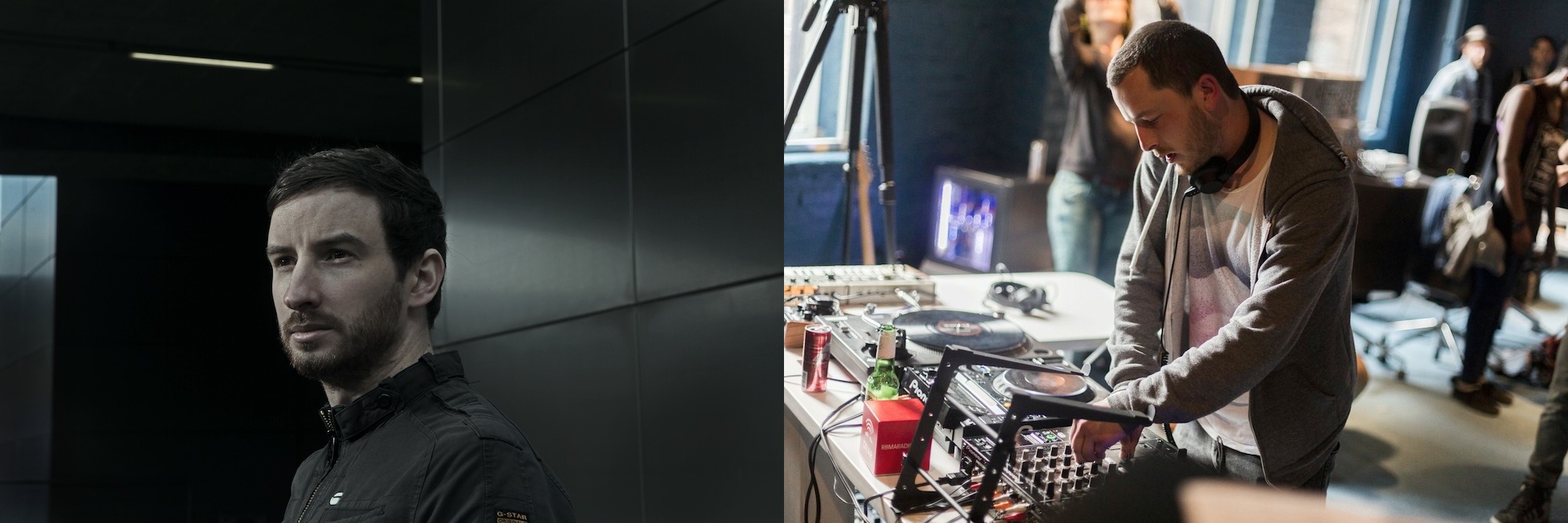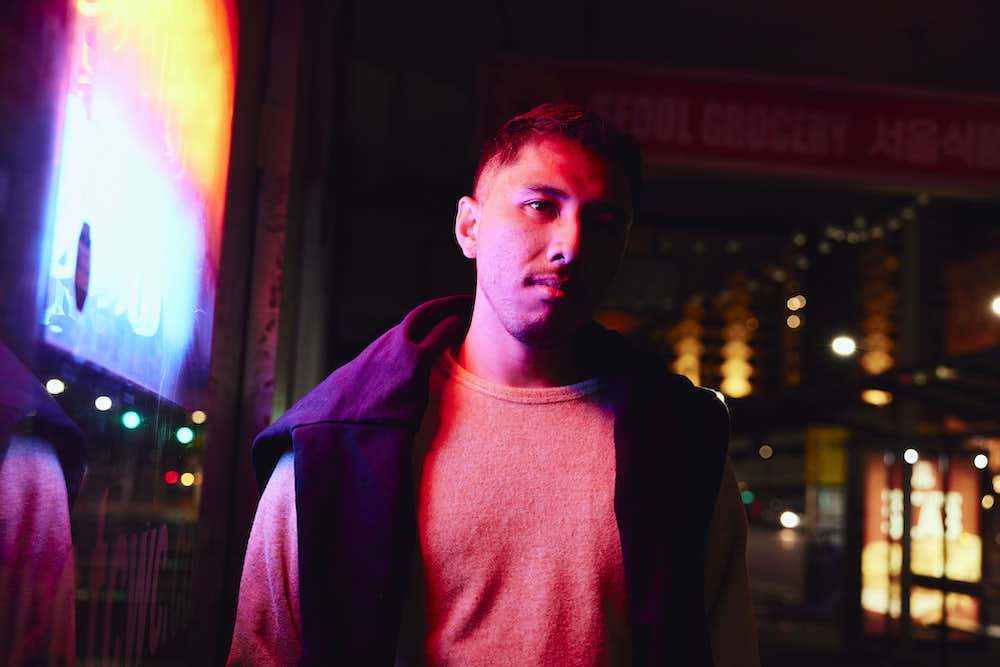Artist To Artist: Max Cooper & Throwing Snow

Max Cooper and Throwing Snow are artists who share a supreme attention to detail. Cooper has restructured techno with his complex, heady productions, whilst Ross 'Throwing Snow' Tones draws on a palette that includes dubstep bass, garage rhythms, and glacial techno melodies. We invited the two to question each others recording techniques, creative processes, and approaches to live performance, and ended up getting an deeper interview than we think either of the two has ever delivered. Read on…
Max: Hi Ross, I wanted to ask you about your creative process, how the earliest part of a track comes into being. It’s probably the most important part of making a track, getting some sort of really basic idea down, which can then be built on in a mainly a prescriptive way – it’s relatively easy to explain how each plugin and synth works and how to use compression etc etc, all of that is just well defined technical processes, even if they are complex, but the start of a piece of music is something different, where the translation from an internal state to something definable happens. I’m interested in how you approach that part of the process, do you need to work at certain times or with certain rituals, can you always start new tracks when you want to or sometimes does it not seem to work, and do you have any suggestions for getting to a productive creative state?
Ross: I seem to go through periods of desperately wanting to write followed by fallow periods where it just doesn’t click, almost like a cycle. I’ve tried so many ways of getting out of these slumps but I’ve now found something that works for me.
I normally start tracks with a sound that has character, a drum sound or synth patch, but with no specific direction. For me it’s the sounds that define the direction and only after starting with an element and then adding to it, do instinctively know where it’s going. More often than not, the first element in the track never makes it to the final mixdown. Stripping back is an important of my process because I find that one of the additional elements may lead in a different direction. If I get stuck I mess around with the tempo of the track, sometimes half time results in something more interesting.

Another coping mechanism if things aren’t working is to just work on creating on sounds, hits and one shots, so that you can use them at a later point. Sometimes this is just resampling the shit track I’m writing and messing it up with a granulator or slowing it down and modulating it.
It’s different for everyone, but I prefer writing at night just because my music is built for the night.
I’m really interested in the use of space in music, especially binural 3D sound effects. I know you recently used the 4D sound system which gives full spacial control. How do you think this approach has changed your writing especially in respect to arrangement? Does the 4D system translate when recorded binaurally and could this give you a new way of writing if you had access to the rig all the time?
Max: To be honest, it’s probably made my writing for normal club systems simpler. I was always obsessed with trying to get as much wideness, spatiality and immersion into my tracks as I could, and sometimes that doesn’t translate well to normal club systems/spaces with unpredictable acoustics. When I found the 4D system I realised that is what I needed all along to really do what I had wanted, and with that I gained more of an understanding of what normal systems are limited at, and how you need to keep things simple for them to work well in a normal club environment – people just need huge mono kick drums mainly! Unfortunately due to the size and complexity of the 4D system, it’s not something I can tour with easily, so more recently I’ve started building some tracks in standard surround-sound, using 6-12 channels, which I can more easily translate to a normal club environment on a more regular basis – that’s a project for future though, when I’ve kitted out my studio with all the extra monitors and built a whole set.
I have done a lot of experiments with binaural recording of the 4D system yes, you can hear one here – this is a private link and hasn’t been made public before, but hopefully we can share it in this conversation;
It only works with headphones of course, and it’s not a piece of music really, it’s one of my “audio sculptures”, a project where I wanted to create different audio-spatial experiences that can run on a loop for people to explore and hear what the system can do, outside of a normal gig setting. This one was really just about taking the reality of the surrounding environment and snapping it apart, it’s just audio spatial bling really, but a decent example of how the experience translates using binaural recording – headphones on, eyes closed, for full effect.
And yes, it opens a lot of doors for writing music too, I have been incorporating recordings from the 4D system and a surround sound system into my new productions that I’m working on a the moment.
Ross: I’m also really interested in the role of imperfections in music, do you embrace mistakes or try to make as crystal a representation as you can?
M: I’ve definitely moved towards a more free, mistake embracing, production process in the last year or two. I used to have everything really precise and digital, and now a lot of it sounds quite lifeless to me. So I’ve been pushing more towards sampling of live experiments with percussion and synths, which I record and then edit and make coherent later. There’s also the added quality of finding fortuitous mistakes, especially when playing with complex systems. But I feel like I’ve still got a long way to go on my journey from bedroom producer who can’t afford anything but a computer and does everything digitally, to some sort of more live, analogue, humanised production sound.
I have to say though, to me, you have this sort of quality in your sound nailed, I’d love to know what you’re using at the moment? And have you found any nice new plugins or softsynths recenty?
R: I’m finding some amazing stuff for the iPad at the moment, the Arturia synths are amazing and things like Samplr have totally changed the way I work. I really think music apps for the iPad have really changed the game recently because they are so cheap yet very powerful. I’ve also got in to the Korg Volcas in a big way because of the fun you can have patching them in different ways with my other analogue gear. Check out Leap Motion and Serenade III, which I’m now useing as a big part of my live setup.
I know you did a Computational Biology PHD. This, at some point, must have involved watching natural systems evolve dependent on the initial starting positions and the non linear equations they obey. Could the same approach be applied to self generating music, have you experimented with this at all, given your background?
The problem with self-optimising systems is that they need something to optimise towards, some sort of perfect solution. In the natural world living organisms optimise towards survival and reproduction, and for my research we used particular types of common genetic mechanisms found in living organisms, as optimisation aims for the simulated evolving system. But for music the “optimal” solution is much less clear, and the subtleties of our appreciation of music can’t be easily quantified, partly because they’re always changing and are dependent on all sorts of things in life outside of music. That’s not to say it wouldn’t be interesting to work on evolving musical systems, I’m sure some great things could come of it, but it would be an all consuming project for a few years, so it’s not a road I’ve gone down yet.

For the moment I’ve stuck to trying to bring my science interests into my music and performances in other ways, like with my new Emergence live show. I drew on a lot of my interests in science and the idea of natural law, to work on video content with many different artists and a couple of mathematicians, to create a new audiovisual performance where I can tell the story of the emergence of the world around us from basic underlying form. It presents lots of scientific ideas, the distribution of the primes, the action of gravity, star birth, life formation, evolution, the human machine, and many others, that all lend themselves well to beautiful visuals and synced music that I can control in a live setting.
What about you, how do you go about your live shows, and what are you planning for next year?
I’m constantly changing my set up because I want to make it as intuitive as possible to use. Over the last month I’ve actual done a totally overhaul for two reasons. The first being that i want to use computers and Ableton but not as the main hub, I’m switching to a hardware sampler and using the iPad and Samplr alot more. This is because I want everything to be as stable as possible so I can clock everything together and be confident that if the laptop drops out, everything else will be ok. The second reason is that I have been looking for a way to more effectively improvise. My new hybrid set up should be allow me to be less rigid in the way I record live loops etc. It’s a constant battle between needing the things I record live having to be clocked and wanting the freedom to be bpm free.
My setup is also changing because I want audiences to see exactly what I’m doing; when I make a gesture I’d like the setup to make a sound so there is a more direct like between what I’m doing and the sound that is coming out of the rig. I find I’m creating tracks on the fly but only certain things I do can be translated and understood by the audience….it could look like I’m many just twiddling knobs for 60 mins. Recently there has been a massive leap forward with technology that means I can fulfil this dream better.
I noticed you wearing a Tusk Wax T Shirt in your Boiler Room set. Excellent label run by an excellent man!
I didn’t realise you knew the mysterious and un-named Mr Tusk! I used to share a house with Mr Tusk and Gareth Williams / Satirist (who is behind the Lemur MIDI controller amongst other things) back when we were mainly focused on ice-cream, basal and tomato ketchup sandwiches.
Haha amazing! Lemur is great also, having a customisable controller is paramount for me as it allows for a lot less menu drilling down, and with multi touch I can control far more things at once.
Max Cooper is premiering his Emergence A/V show in London at Oval Space on 5th March.
Throwing Snow is playing alongside Gilles Peterson at The Old Queen's Head on 1st February.


















Must Reads
David Holmes – Humanity As An Act Of Resistance in three chapters
As a nation, the Irish have always had a profound relationship with the people of Palestine
Rotterdam – A City which Bounces Back
The Dutch city is in a state of constant revival
Going Remote.
Home swapping as a lifestyle choice
Trending track
Vels d’Èter
Glass Isle
Shop NowDreaming
Timothy Clerkin
Shop Now